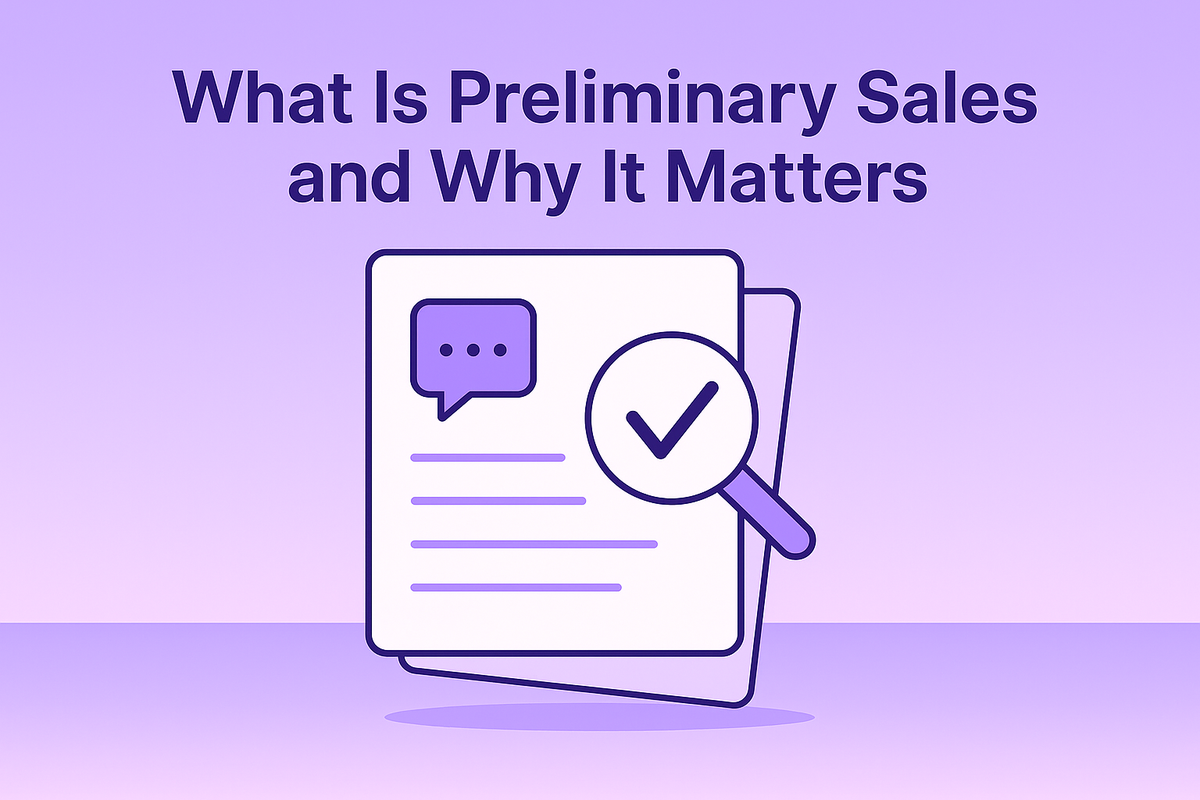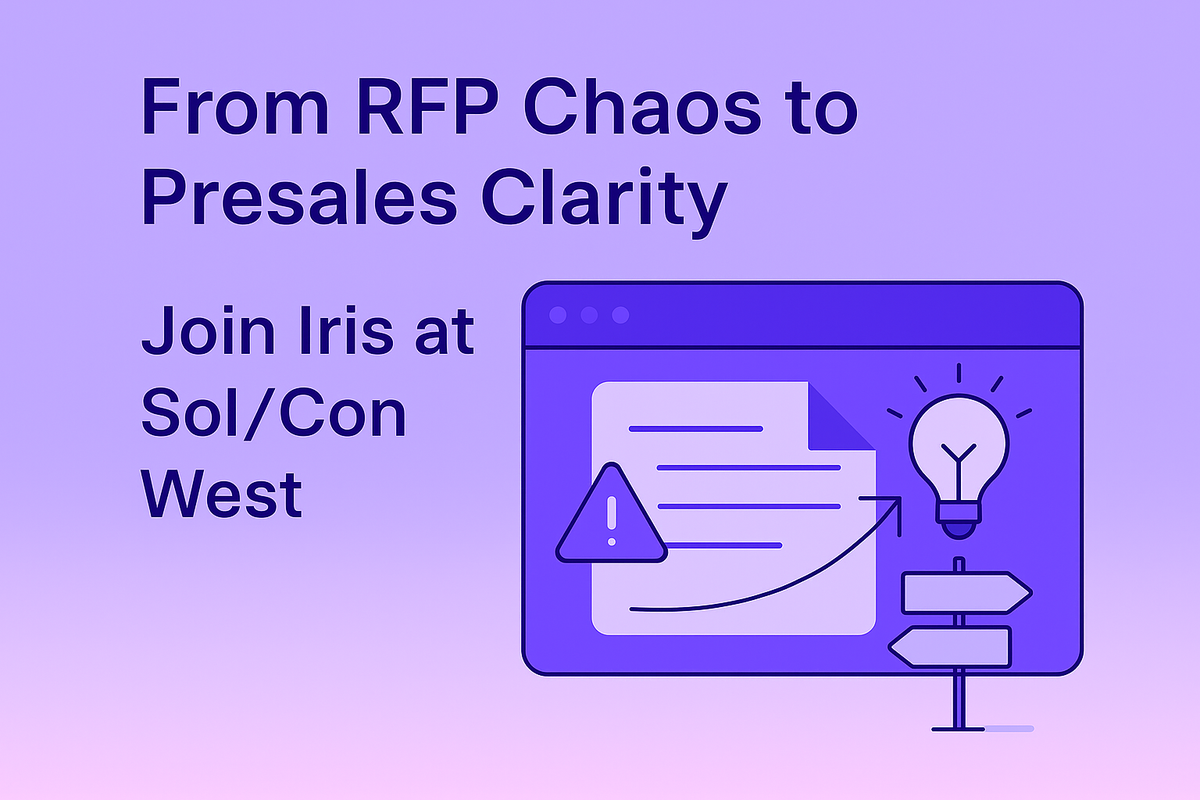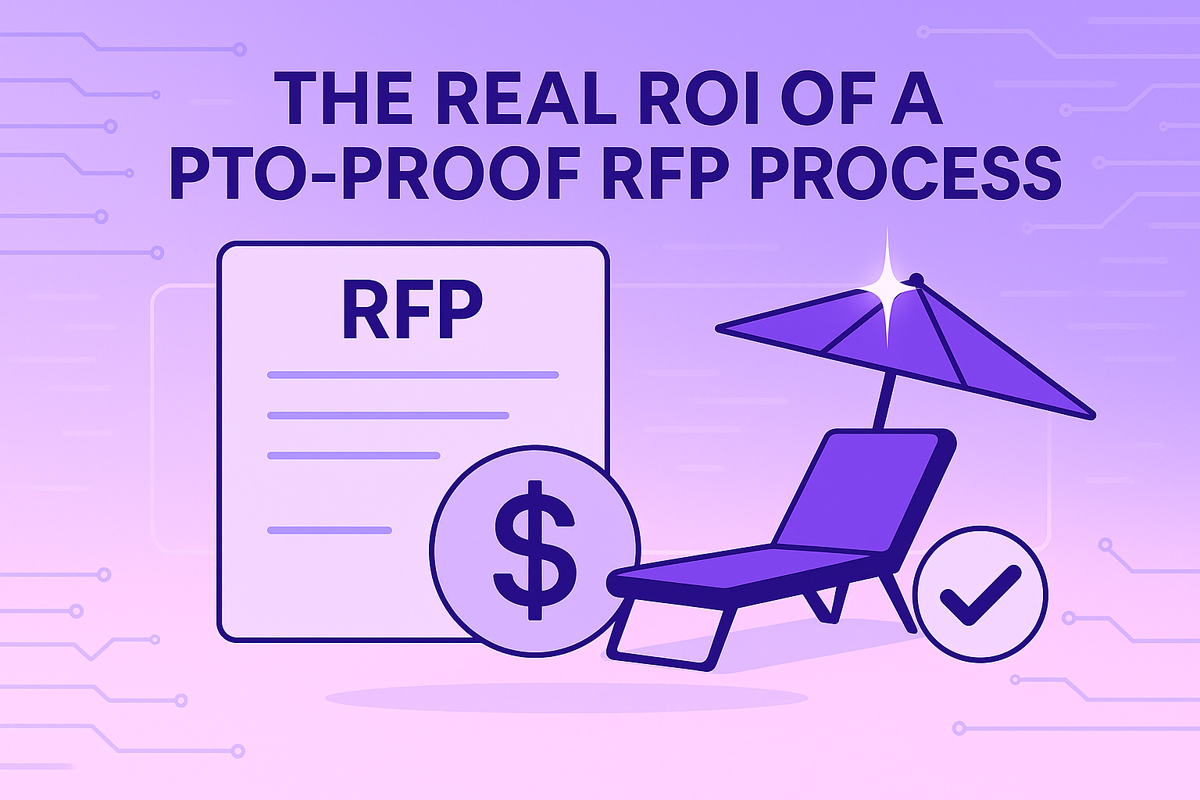What Is Preliminary Sales? A Practical B2B Guide
October 28, 2025
By
Evie Secilmis

You know the feeling. A deal looks perfect on paper, you’ve spent weeks on it, and then it stalls for a reason you never saw coming. The problem likely wasn’t in your proposal or your demo. It started much earlier. This is the world of preliminary sales—the foundational work that happens before you ever pitch a solution. It’s where you uncover the real pain, map the decision-makers, and confirm urgency. When sales teams rush this phase, they end up with mismatched expectations and deals that fall apart at the finish line. This guide breaks down why this early stage is so crucial and how to get it right.
In B2B sales, deals don’t start when a proposal is sent.
They start long before — in conversations, signals, and early research that shape how the rest of the sales cycle unfolds.
This is the world of preliminary sales — the foundational work that makes the later stages possible.
What is Preliminary Sales?
Preliminary sales is the earliest phase of a sales cycle. It’s where sellers focus on:
- Educating prospects
- Qualifying opportunities
- Mapping stakeholders
- Understanding the buying timeline and process
This phase can start with a cold outbound message, a conference interaction, or an inbound demo request — but it always revolves around one goal: creating alignment before you pitch anything.
Great sales teams know that how a deal starts shapes how it ends.
When you skip over preliminary sales or treat it like a formality, the rest of the cycle becomes a patchwork of guesswork, assumptions, and mismatched expectations.
The B2B Presales Function
In many B2B organizations, this early-stage work isn’t just an informal part of a salesperson’s job — it’s a dedicated function known as presales. The presales team acts as the technical and strategic backbone of the sales process, ensuring that the solutions being proposed are not only compelling but also viable. They are the experts who step in to answer the tough questions, build custom demos, and map a prospect’s complex problems to the specific features of a product. This specialized focus allows account executives to concentrate on relationship-building and negotiation, while the presales team handles the technical deep dives that get deals across the finish line.
"Preliminary Sales" in Other Industries
The idea of doing foundational work before a final sale isn't unique to B2B software or tech. The concept of "presales" appears in various forms across different industries, always serving the same core purpose: to create a clear, committed path toward a final agreement. By looking at these examples, we can better understand the strategic value of securing alignment and reducing risk early on. Whether it’s a house, a movie, or a new product, the principle remains the same — the work you do before the contract is signed is just as important as the signature itself.
Real Estate Agreements
In real estate, a Preliminary Sales Agreement, or "compromesso," is a standard part of the buying process. This document serves as a formal promise where both the buyer and seller commit to signing the final sales contract later. It outlines the key terms and protects both parties by creating a binding commitment before the extensive legal and financial work of the final transfer is completed. This is a perfect parallel to the B2B presales function, which aims to get all stakeholders to agree on the scope and value of a solution before the final contract is drafted.
Film Distribution
The film industry also relies heavily on a presales model. It’s common practice for producers to sell the distribution rights for a movie in different countries long before the film is even finished. These presales agreements are based on the script, cast, and director, and they provide the crucial funding needed to actually produce the movie. This shows how presales can be used to validate an idea and secure investment, much like a B2B presales team validates a technical solution and secures a customer's buy-in before the implementation phase begins.
Marketing and Product Launches
Marketing teams live in the world of presales, even if they don't always use the term. All the activities that happen before a direct sales pitch are a form of presales. This includes researching customer profiles, identifying potential buyers, running discovery calls to understand their needs, and qualifying leads to ensure they are a good fit. These efforts are designed to warm up an audience and create a pipeline of educated, interested prospects, making the final sale a much smoother and more natural process for the sales team that follows up.
The Modern Presales Role and Responsibilities
Back in the B2B world, the presales role has evolved into a highly strategic function that is critical for closing complex deals. A modern presales professional is a unique blend of technical expert, business consultant, and storyteller. They work alongside account executives to not just sell a product, but to design a comprehensive solution that solves a customer's core challenges. Their involvement signals that a deal is moving beyond initial interest and into a serious evaluation, where technical feasibility and return on investment are the main focus. This team is the key to turning a prospect’s vision into a workable plan.
Common Job Titles: Sales Engineer and Solution Architect
If you look for presales professionals in a company directory, you might not find them under "presales." The role goes by many names, including Sales Engineer, Solution Engineer, Presales Consultant, and Solution Architect. While the titles differ, the mission is consistent: to provide deep product and industry expertise during the sales cycle. These individuals are the go-to resource for complex technical questions and are responsible for ensuring that the proposed solution is perfectly aligned with the customer's needs, both for now and for the future.
Core Responsibilities: From Demos to Proposals
The day-to-day work of a presales professional is diverse and demanding. Their core responsibilities include discovering a customer's technical and business requirements, preparing and delivering tailored product demonstrations, and building proofs of concept to show the product in action. A major part of their job is also responding to detailed security questionnaires and creating proposals, RFPs, and SOWs. This is where having the right tools becomes essential. An AI-powered platform can automate the tedious work of finding and inserting approved content, allowing presales teams to generate accurate, high-quality first drafts in minutes, not days.
The Bridge Between Customers and Product Teams
Perhaps the most vital role a presales professional plays is that of a bridge. They are the critical link connecting what the customer needs with what the company’s products can deliver. But their role as a liaison doesn't stop there. Because they spend so much time in the trenches with customers, they gather invaluable insights into market demands, competitor activity, and product gaps. They then carry this feedback internally to the product and engineering teams, directly influencing the future direction of the product roadmap and ensuring the company’s offerings continue to evolve with customer needs.
Why Preliminary Sales Is So Crucial
Too many sales teams rush to send proposals or start product demos before the groundwork is done.
The result?
- Low close rates
- Wasted time
- Mismatched expectations
- Burned champions who weren’t really champions
Preliminary sales helps avoid this by ensuring:
- You’re talking to the right person (or can get to them)
- The pain is real, urgent, and clear
- There’s budget and process to support a deal
- You understand the prospect’s language, needs, and priorities
- You can tailor everything — from the deck to the pilot — based on actual context
It’s about building trust before you build a business case.
Common Mistakes in Preliminary Sales
Even experienced sales teams can get tripped up early in the cycle.
Some of the most common mistakes include:
- Pitching too soon: Starting with features before confirming the pain and need.
- Relying on a single champion: Without mapping the rest of the buying committee, you risk losing momentum if they go silent.
- Skipping qualification because of logo bias: Just because it’s a big name doesn’t mean it’s a real deal.
- Not confirming urgency: Without clear timelines, your “pipeline” is just a backlog of maybe-laters.
- Assuming interest = intent: Just because someone took a call doesn’t mean they’re ready to buy.
Fixing these early mistakes saves hours down the line — and sets the tone for a clean, confident sales cycle.
The Key Activities in Preliminary Sales
1. Discovery Calls That Go Deeper
This isn’t a checkbox. It’s your chance to:
- Uncover the “why now?” behind the search
- Understand internal dynamics (champions, blockers, influencers)
- Set the tone for trust early
- Understand how the problem is currently being solved — or not solved at all
- Spot friction that isn’t obvious in a case study
A great discovery call doesn’t just fill in your CRM.
It reveals the emotional drivers, risk tolerance, and internal narratives behind the buying decision.
2. Qualification Frameworks (Like MEDDIC, BANT, or SPICED)
Used well, these don’t just filter out bad deals — they guide the conversation.
Think of them as your backstage pass into how the buyer thinks.
With the right framework, you can:
- Identify real decision criteria
- Understand urgency and process
- Align with internal evaluation stages
- Know when to walk away (and why)
Frameworks help reps stay focused without going into autopilot.
They’re about asking better questions, not more questions.
3. Stakeholder Mapping
Who needs to say yes? Who just needs to be informed?
Knowing this early helps you:
- Avoid late-stage blockers
- Tailor your messaging to each role
- Co-create value across departments (e.g., IT, finance, ops)
- Understand influence vs authority — two very different things
If you’ve ever lost a deal because “legal didn’t like it,” you know what happens when this step is skipped.
4. Competitive Awareness
Preliminary sales often reveals what other solutions are being considered.
This gives you:
- A chance to differentiate clearly
- Insight into what they’ve already tried or seen
- A preview of objections you’ll face later
- A read on whether you’re the first call — or the last shot
It’s not about going negative. It’s about being prepared.
5. Internal Alignment
Sales doesn’t work alone. Preliminary work helps align with:
- Presales and solution architects — for technical validation
- Marketing — for use-case content and proof points
- Legal/security — for inevitable procurement steps
Deals stall when internal teams are looped in too late.
Early alignment = faster cycles.
Best Practices for a High-Performing Presales Team
Establish a Structured Process
Top-tier presales teams don’t just wing it. They operate with a structured, repeatable process that ensures nothing falls through the cracks. This isn’t about creating rigid scripts; it’s about building a reliable framework for qualification and discovery. A solid process confirms that you’re talking to the right people, the pain you’re solving is urgent, and a budget actually exists to support a deal. By standardizing these early steps, you create a clear path from initial contact to a qualified opportunity. This structure is what prevents the sales cycle from becoming a series of guesses and helps you eliminate bottlenecks before they even form, setting the stage for a clean, confident deal.
Hire for Deep Industry Expertise
Product knowledge is important, but industry expertise is what builds immediate credibility. When your presales team understands the customer’s world—their language, their pressures, and their priorities—the conversation changes. Instead of just presenting features, they can connect your solution to the specific challenges that keep a prospect up at night. This deep expertise is the antidote to the “patchwork of guesswork” that happens when sellers don’t truly grasp the customer’s context. It allows your team to guide the conversation with authority and insight, shaping how the deal unfolds from the very first call. This is how you move from being just another vendor to becoming a trusted advisor.
Set Clear Expectations with Customers
The preliminary sales phase is your first and best chance to build a foundation of trust. This isn’t about rushing to a business case; it’s about creating transparency and alignment from day one. A high-performing presales team is upfront about the evaluation process, realistic about timelines, and honest about what the solution can and cannot do. By setting clear expectations, you demystify the buying journey for the customer and give them the confidence to champion your solution internally. This approach transforms the dynamic from a transactional pitch into a collaborative partnership, which is essential for a great customer experience and long-term success.
Measure Your Impact on Sales Wins
To prove its value, a presales team needs to track its influence on revenue, not just its activity. Go beyond metrics like “demos completed” and focus on what truly matters: sales outcomes. Measure things like the conversion rate from the discovery stage to closed-won deals, the average sales cycle length for presales-involved opportunities, and the technical win rate. When you can show that your team’s early involvement leads to faster cycles and higher close rates, you demonstrate a clear return on investment. Fixing mistakes in the preliminary phase saves countless hours later on, and tracking these metrics proves just how critical that early work is to the entire sales motion.
Tools That Support Preliminary Sales
Modern sales teams aren’t doing this on instinct alone. They use:
- CRM integrations to track early-stage behavior and intent
- Conversation intelligence platforms (Gong, Chorus) to review and coach discovery calls
- Mutual action plans to formalize the buying journey
- AI insights tools to surface similar deals and win patterns
- Collaboration tools to coordinate internally on deal strategy
The tools don’t replace judgment — they reinforce it.
Preliminary Sales vs. Traditional Sales Development
While it shares overlap with SDR work, preliminary sales isn’t just top-of-funnel activity. It’s:
- Smarter than just lead gen
- More strategic than hand-raising
- Focused on setting up a great sales cycle, not just starting one
SDRs might open the door. Preliminary sales teams decide which doors are worth walking through.
What Great Preliminary Sales Looks Like
- You don’t pitch. You listen.
- You help the buyer articulate their own internal needs.
- You document more than just “budget” — you map the org.
- You get early signals of deal velocity and risk.
- You build credibility before the product ever shows up.
It’s subtle. It’s quiet. But it’s where trust is earned.
And trust is what moves deals forward.
How Preliminary Sales Fits Into Modern GTM
The B2B landscape is changing fast. Buyers are:
- Doing more self-research
- Evaluating more tools in parallel
- Involving more stakeholders
- Expecting value early, not just in the pitch
That means sellers need to show up smarter.
Preliminary sales isn’t optional — it’s how modern companies win trust in a crowded market.
It’s also deeply cross-functional.
When product, marketing, and sales are aligned early, the result is a more personalized, confident, and fast-moving cycle.
Preliminary sales is the connective tissue between the buyer’s intent and your company’s ability to deliver.
Final Thought
Great deals don’t close themselves. They’re built on great groundwork.
Preliminary sales is where that groundwork begins — and the companies who take it seriously don’t just win more… they waste less time chasing the wrong things.
If your sales cycle feels slow or scattered, don’t just look at the proposal. Look upstream.
Preliminary sales is probably where the real problem — and the real leverage — lives.
Looking to operationalize this phase better?
Start by reviewing your discovery calls and stakeholder maps.
That’s where most of the hidden friction lives.
Frequently Asked Questions
Isn't "preliminary sales" just another name for what our Sales Development Reps (SDRs) already do? Not quite. While there's some overlap, think of it this way: SDRs are experts at opening the door. The preliminary sales function is about deciding if the room behind that door is worth entering. It goes much deeper than just qualifying interest. It involves technically validating a solution, mapping the entire buying committee, and understanding the core business pain so you can build a strong foundation for the rest of the sales cycle.
We're a small team. Do we need to hire a dedicated presales person? You don't necessarily need the official title, but you absolutely need to embrace the function. On a smaller team, an Account Executive or even a technical founder might take on these responsibilities. The important thing is that someone is consciously slowing down to do the deep discovery and strategic work before jumping into a demo. The role is less important than the commitment to the process.
What's the biggest red flag that my team is skipping this crucial preliminary work? The most telling sign is when deals consistently stall late in the game for reasons that catch you by surprise. If you're frequently getting blocked by a legal team you never met or a senior leader who has sudden objections, it’s a clear indicator that the early stakeholder mapping was incomplete. These last-minute hurdles are almost always symptoms of a rushed preliminary phase.
You mentioned stakeholder mapping. What if I can't get access to the decision-makers early on? This is a common hurdle, and it’s where your champion becomes your internal guide. Instead of trying to go around them, you need to work with them. Ask direct questions that help them help you, such as, "Who else will feel the impact of this decision?" or "Can you walk me through what the approval process typically looks like here?" This approach empowers your champion to map the organization for you and gives you a clear picture of the political landscape.
How does getting preliminary sales right make the proposal and RFP stage easier? It makes all the difference. When you've done the upfront work, your proposal shifts from a generic pitch into a tailored solution. You already know the specific pain points, the key stakeholders' priorities, and the exact metrics they care about. This allows you to write a compelling document that speaks directly to their world, which is far more effective than simply listing features. This groundwork ensures your final proposal feels like the natural conclusion to a conversation you've been having all along.
Key Takeaways
- Master the First Conversation: The success of a deal is decided in the early stages. Use discovery calls not just to qualify, but to build the strategic foundation that prevents deals from stalling down the line.
- Map the People, Not Just the Problem: A single champion isn't enough. Identify every stakeholder, blocker, and influencer early on to tailor your messaging and avoid getting derailed by internal politics at the finish line.
- Earn Credibility Before You Demo: Stop leading with your product and start with the prospect's pain. By focusing on their challenges and building trust first, you position yourself as a strategic partner, not just another vendor.
Related Articles
Share this post
Link copied!




















